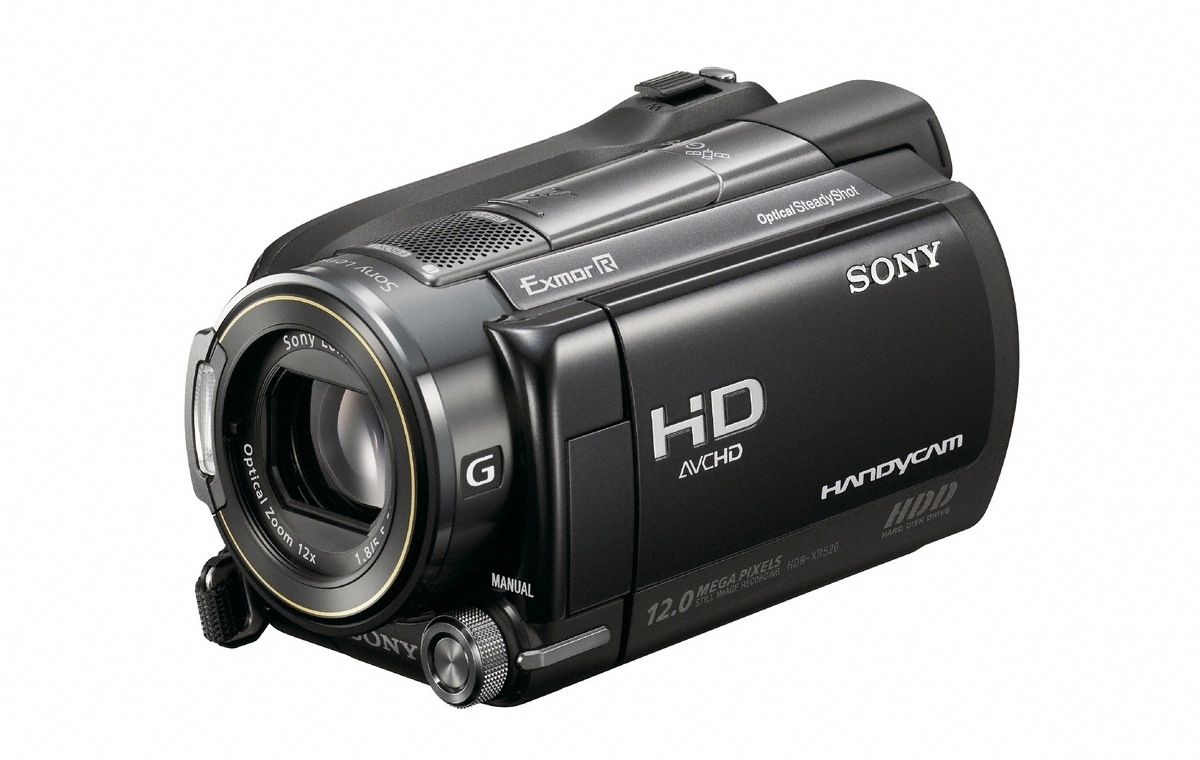Hands on: Sony HDR XR520 Handycam

It may not have a folding OLED screen or video goggles, but Sony's new flagship Handycam, the HDR XR520, is one of the most innovative products the company is showing this CES.
The $1500 (£1050) Full HD camcorder is the first imaging device from a major manufacturer to ship with GPS built-in.
It's also the first to use Sony's new Exmor-R CMOS sensor - variously described as 1/3.15-inch or 1/2.88-inch - with 6MP of resolution, and is home to a jaw-dropping 240GB hard drive.
The palmcorder device looks and handles similarly to the SR12 it replaces - although it's on the chunky side at 510g. Sony's usual touchscreen LCD here spans a generous 3.2-inches.
The first feature I noticed was an improved optical image stabiliser - already pretty much class-leading on Sony products. The new Active Mode SteadyShot copes with a larger range of motion than before.
You don't see much difference in relatively stable shots, for example where you're trying to hold the camera at extreme telephoto (here 12x, about 600mm equivalent), but the difference is clear when the camera itself is moving - when you're filming while walking or running, say.
GPS to go
Sign up for breaking news, reviews, opinion, top tech deals, and more.
There's no need to manually activate the GPS functionality - the XR520 automatically geo-tags every vidoe and still photo (up to 12MP) you shoot. Then when you switch into playback mode, you can choose to view files as pins in the embedded Navteq maps.
The menu pad browses around, and the lens rocker zooms into or out, of the maps, although don't expect to be able to find your way home using them - maps show some major highways and landmarks but far from every road and lane. Selecting a pin brings up a (rather small) thumbnail of the photo or video clip to the left.
The XR520 geo-tags every JPEG image you shoot in the Exif metadata, which should upload easily to any location-enabled photo sharing website. Video clips aren't so well served - you'll have to manually geo-locate them as they lack the standard metadata of still photos.
Low light sensor
The other impressive innovation on Sony's XR520 Handycam is the new Exmor-R sensor. By placing the photodiode above the sensor circuitry, Sony claims to have improved the sensitivity - the results are extremely good. Low light noise is vastly reduced, shadows look richer and darker and colours are clearer.
The new sensor is also found throughout on the XR500, which is identical apart from having a 'mere' 120GB hard drive instead of the XR520's massive 240GB shock-protected HDD - capable of storing up to 92 hours of HD in long play.
Overall, this is a splendid effort from Sony, with a smart implementation of GPS functionality that shows other makers what to aim for.
Mark Harris is Senior Research Director at Gartner.